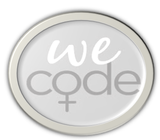$29.99
COMP9021 Coding Quiz 4 Solution
COMP9021 Principles of Programming
Coding Quiz 4
Description
You are provided with a stub in which you need to insert your code where indicated without doing any changes to the existing code to complete the task.
Implement a function called, encode(list_of_integers), that, based on the encoding of a single strictly positive integer that in base 2 reads as b1 ... bn, as b1b1 … bnbn, encodes a sequence of strictly positive integers N1, ..., Nk with k >= 1 as N1*0 … 0 Nk* where for all 0 < i <= k, Ni* is the encoding of Ni.
Implement a function called decode(integer), to decode a strictly positive integer N into a sequence of (one or more) strictly positive integers according to the previous encoding scheme or return None in case N does not encode such a sequence.
We assume that the user input is valid. No need to check for validity, nor to take action in case it is invalid.
Let us explain the above using an example.
First, the encoding (resp. decoding) scheme used here is that each bit is duplicated (resp. halved).
For instance, 424896, in base 2, is 1100111101111000000. Taking the first 2 bits, 11, this decodes to 1, the next 2 bits 00 decodes to 0, and so on until we reach the single 0 which represents a separator, meaning we are moving on to a new number. We then start again with the next 2 bits 11 which decodes to 1, and so on until we reach the end of the string. We are then left with a list of numbers in base 2 as [1011, 11000] which we convert back to base 10 as [11, 24].
The encoding process is the opposite of the above. We take [11, 24] as input, converted to base 2 [1011, 11000]. Taking the first number, we duplicate each bit getting 11001111 then for the separator add a 0 then duplicate each bit in the next number 1111000000. Combined together, it forms a single number 1100111101111000000 which when converted to base 10 is 424896.
This means that if the base 2 number is something like 111 (7), 101 (5), or 11000 (24), it is then impossible to decode.
See test cases below for more examples.
Make sure not to change the filename quiz_4.py while submitting by clicking on [Mark] button in Ed. It is your responsibility to check that your submission did go through properly using Submissions link in Ed otherwise your mark will be zero for Quiz 4.
Test Cases
$ python3 quiz_4.py
Input either a strictly positive integer
or a nonempty list of strictly positive integers: 1
In base 2, 1 reads as 1
Incorrect encoding!
$ python3 quiz_4.py
Input either a strictly positive integer
or a nonempty list of strictly positive integers: 12345
In base 2, 12345 reads as 11000000111001 Incorrect encoding!
$ python3 quiz_4.py
Input either a strictly positive integer
or a nonempty list of strictly positive integers: 3
In base 2, 3 reads as 11
It encodes: [1]
$ python3 quiz_4.py
Input either a strictly positive integer
or a nonempty list of strictly positive integers: [1] In base 2, [1] reads as [1]
It is encoded by 3
$ python3 quiz_4.py
Input either a strictly positive integer
or a nonempty list of strictly positive integers: 51315663
In base 2, 51315663 reads as 11000011110000001111001111
It encodes: [4891]
$ python3 quiz_4.py
Input either a strictly positive integer
or a nonempty list of strictly positive integers: [4891] In base 2, [4891] reads as [1001100011011]
It is encoded by 51315663
$ python3 quiz_4.py
Input either a strictly positive integer or a nonempty list of strictly positive integers: 424896
In base 2, 424896 reads as 1100111101111000000 It encodes: [11, 24]
$ python3 quiz_4.py
Input either a strictly positive integer
or a nonempty list of strictly positive integers: [11, 24] In base 2, [11, 24] reads as [1011, 11000]
It is encoded by 424896
$ python3 quiz_4.py
Input either a strictly positive integer
or a nonempty list of strictly positive integers: 857310204
In base 2, 857310204 reads as 110011000110011000001111111100 It encodes: [10, 20, 30]
$ python3 quiz_4.py
Input either a strictly positive integer
or a nonempty list of strictly positive integers: [10, 20, 30] In base 2, [10, 20, 30] reads as [1010, 10100, 11110] It is encoded by 857310204
$ python3 quiz_4.py
Input either a strictly positive integer
or a nonempty list of strictly positive integers: 13609683913728
In base 2, 13609683913728 reads as 11000110000011000000011000000000110000000000 It encodes: [2, 4, 8, 16, 32]
$ python3 quiz_4.py
Input either a strictly positive integer
or a nonempty list of strictly positive integers: [2, 4, 8, 16, 32]
In base 2, [2, 4, 8, 16, 32] reads as [10, 100, 1000, 10000, 100000] It is encoded by 13609683913728
Some More Test Cases
$ python quiz_4_sol.py
Input either a strictly positive integer
or a nonempty list of strictly positive integers: 100 In base 2, 100 reads as 1100100 Incorrect encoding!
$ python quiz_4_sol.py
Input either a strictly positive integer
or a nonempty list of strictly positive integers: 99
In base 2, 99 reads as 1100011
It encodes: [2, 1]
$ python quiz_4_sol.py
Input either a strictly positive integer
or a nonempty list of strictly positive integers: [2, 1]
In base 2, [2, 1] reads as [10, 1]
It is encoded by 99



